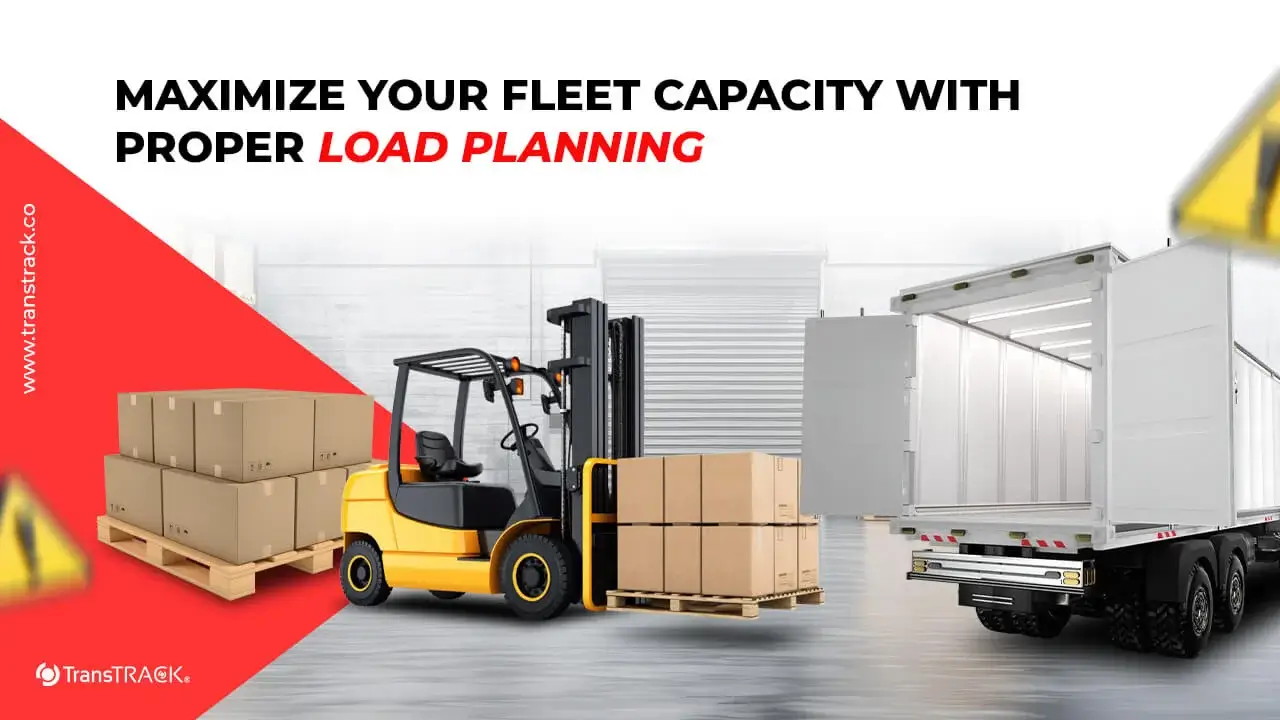Maximize Your Fleet Capacity with Proper Load Planning
Posted on June 17, 2025 by Nur Wachda Mihmidati

In the logistics industry, successful delivery is not only determined by speed or timeliness, but also by how the load is planned and organized from the start. This is where the role of load planning becomes very important.
Load planning is the strategic process of arranging goods into transport vehicles in the most efficient, safe, and capacity-appropriate manner. When done correctly, load planning can reduce operational costs, maximize fleet utilization, and reduce the risk of damage to goods during delivery.
In the midst of increasing demand and distribution complexity, logistics companies are now required to implement a load planning approach that is not only manual, but also technology-based. This article will discuss the objectives, functions, success indicators, and the role of technology such as Transportation Management System (TMS) from TransTRACK in improving the overall load planning process.
What is load planning?
Load planning is the process of planning and arranging loads in transportation or logistics so that the transportation of goods is carried out as efficiently and safely as possible. The goal is to optimize the use of space, weight, cost, and delivery time, as well as ensuring the goods arrive in good condition.
How does load planning reduce operational costs?
Good load planning reduces operational costs through various means that focus on efficient use of resources and reduction of wastage.
1. Reducing the Number of Trips
By maximizing vehicle capacity, both in terms of volume and weight, companies can transport more goods in a single shipment. This reduces the number of trips required and has a direct impact on saving fuel, toll fees, and driver hours.
Result: Lower transportation cost per unit of goods.
2. Save Fuel Consumption
An even and balanced load arrangement makes the vehicle run more stably and efficiently. Improper load distribution can increase fuel consumption as the vehicle works harder during acceleration or braking.
Result: Lower fuel expenditure and longer vehicle life.
3. Avoiding Fines and Goods Damage
Good load planning prevents overloads and load imbalances that can lead to fines, accidents, or damage to goods. These damages can lead to additional costs in the form of replacement goods or insurance claims.
Result: Unexpected costs from fines and damages can be avoided.
4. Speeds up the Loading and Unloading Process
Items are arranged in order of delivery, making the loading and unloading process more efficient. Drivers or warehouse personnel do not need to unload the entire vehicle just to pick up one item.
Result: Faster distribution time and less labor cost.
5. Improving Fleet Utilization
Load planning helps ensure that each vehicle is optimally utilized, both in terms of capacity and delivery schedules. This reduces idle vehicles and maximizes fleet investment.
Result: Operational efficiency is improved and return on investment (ROI) of vehicles is higher.
6. Load Planning Technology Support
The use of load planning systems or software enables load visualization, automatic calculation of capacity, and efficient route and schedule planning. Technology such as TransTRACK provides full visibility into the logistics process and aids data-driven decision-making.
Results: Operations become more efficient, accurate and cost-effective overall.
Purpose and Function of Load Planning
In the logistics and distribution process, load planning plays an important role in ensuring efficient, safe, and compliant delivery of goods. Load planning is not just a matter of arranging goods into vehicles, but also involves strategies to optimize space, maintain load safety, and avoid wasting resources.
Here are the main objectives and functions of load planning in logistics operations:
Optimizing the Use of Space
Load planning aims to make the most of the space capacity in a vehicle or container. Goods are organized in an efficient method so that there is no wasted space, so more cargo can be shipped in one trip.
Avoiding Vehicle Overload
With proper planning, the total load weight can be controlled so as not to exceed the vehicle’s capacity. This is important to prevent regulatory violations, avoid fines, and maintain the safety and technical life of the vehicle.
Keeping Goods Safe
Load planning ensures that goods are stacked in a stable and safe manner throughout the journey. Fragile, valuable, or high-risk items will be strategically positioned to avoid damage from bumps, shocks, or improper stacking.
Load Planning Technology in the Logistics Industry
With increasing supply chain complexity and pressure to reduce costs, the logistics industry is increasingly relying on technology in the load planning process. These technologies not only improve operational efficiency, but also provide better visibility and control over the flow of goods. Some commonly used systems and platforms include:
1. Transportation Management System (TMS – TransTRACK)
TransTRACK’s TMS helps companies plan, execute, and monitor shipments end-to-end. The built-in load planning module enables the organization of loads based on volume, weight, route, and delivery priority. The system also provides a real-time dashboard to ensure vehicles and loads are optimally managed.
2. Load Planning Software
The Load Planning platform is specifically designed for advanced load planning. Its features include 3D load layout visualization, container capacity optimization, as well as simulation scenarios to compare shipping efficiency. It is usually used by large companies with complex logistics needs.
3. Integration with WMS and GPS Tracking
Load planning becomes more effective when integrated with Warehouse Management System (WMS) and GPS tracking. This integration ensures that information on stock, position of goods in the warehouse, as well as the location of the fleet can be used to organize loads efficiently and responsively to conditions in the field.
4. Truck Appointment System (TAS – TransTRACK)
TransTRACK’s TAS enables the planning of truck arrival and departure schedules at loading and unloading sites. The system helps avoid vehicle buildup, speed up the loading/unloading process, and adjust load capacity in real-time. TAS also supports integration with load planning systems to organize more precise delivery sequences.
Indicators of Load Planning Success
To ensure that the load planning process actually has a positive impact on logistics operations, it is necessary to measure performance through clear indicators. These indicators help companies evaluate fleet utilization efficiency, load effectiveness, as well as the impact on shipping costs. Here are some of the key indicators used:
1. Truck Utilization Rate
This is the ratio between the capacity of the vehicles used and the maximum available capacity, both in terms of volume and weight. A high utilization rate indicates that vehicles are being used optimally, thereby reducing operational costs and increasing fleet efficiency.
2. Load Efficiency (Weight vs Volume)
This indicator measures the balance between the weight and volume of the loaded cargo. High efficiency occurs when a vehicle approaches the maximum of both without exceeding either. An imbalance (e.g. the vehicle is full in volume but light in weight) may indicate potential waste.
3. Cost per Delivery vs Target
Measures the total cost incurred per delivery compared to a predetermined cost target or standard. A consistent reduction in cost per shipment is an indication that load planning has successfully reduced the number of trips, fuel consumption, and overall travel time.
Load planning is not just a matter of arranging goods in a vehicle, but an important strategy in managing overall logistics efficiency. Proper load planning has a direct impact on cost savings, increased fleet productivity, and safety in the delivery process.

In order for the load planning process to run more accurately, quickly, and integrated, companies need a system that is able to support all transportation operations digitally and in real-time.
TransTRACK Transportation Management System (TMS) comes as an end-to-end solution that includes automated load planning, delivery scheduling, route optimization, fleet tracking, and operational performance analysis.
Optimize your shipping efficiency now with TransTRACK’s TMS system.
Contact our team for a demo and consultation on a solution that suits your business logistics needs.
Topic :
 Bahasa Indonesia
Bahasa Indonesia









